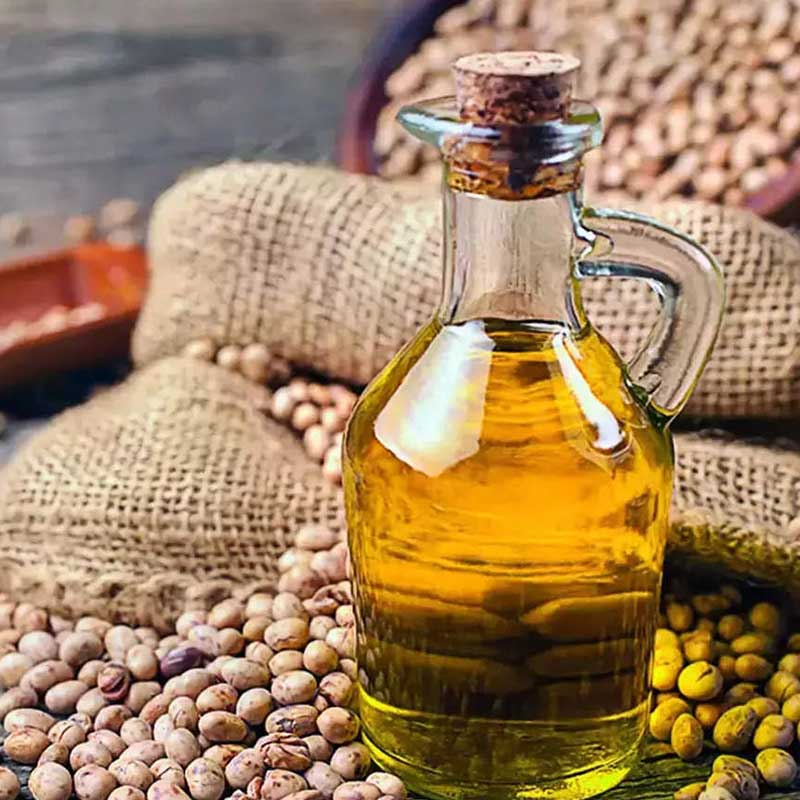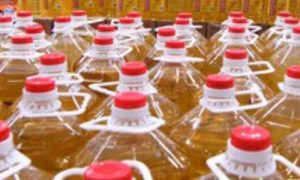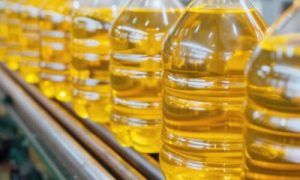Edible oil market may remain stable in short term: GEF India

Hyderabad-based Gemini Edibles and Fats India, founded by Pradeep Chowdhry, is in the business of manufacturing and distribution of edible oils and specialty fats from 2009. A subsidiary of Singapore-headquartered Golden Agri Resources, GEF India is widely known by its brand, Freedom Healthy Cooking Oils. The largest seller and processer of sunflower oil has three port-based manufacturing facilities in India – two in Kakinada and one in Krishnapatnam, Andhra Pradesh. The other oil variants refined and sold by GEF India includes physically refined Rice Bran oil, Groundnut oil, Mustard and Gingelly oil. The company also produces Palmolein oil, value added fats besides bulk trading of edible oils.
In an exclusive conversation with Bizz Buzz, P Chandrashekhara Reddy, Senior Vice-President (Sales and Marketing), Gemini Edibles and Fats India, shares insights on the edible oil market in India and the future plans of GEF India. He attributes the growth and success of this homegrown company to the vision of the founder, leadership team, building international standard infrastructure in terms of processing and manufacturing plants, delivering value to the consumer, and trust on distributors
What factors led GEF India to lead in sunflower oil segment? We are in Karnataka, some parts of Maharashtra, Calcutta, and Jharkhand, total of Andhra Pradesh, Telangana, and Chhattisgarh. We are here as sunflower oil consumption is more. So, being in these States makes us the largest seller of sunflower oil in India. The total consumption of Sunflower oil across India is 2.3 million tonne, wherein 70 per cent is consumed in these States. We launched in 2010, and witnessed some opportunities while entering the market, such as, the consumer is aware about sunflower oil. However, no brand had a proper distribution channel in place across the combined States of Andhra Pradesh and Telangana. There was very sporadic consumer engagement through advertisement or consumer-connect, leading to the absence of strong positioning for any brand. As they were into sales not marketing, we saw the opportunity and built the infrastructure through refining plants.
After 3 refineries in AP, what is the reason behind investing Rs400-500 crore on a new plant in Telangana? From the last two decades, our investments have gone into processing imported oil. We are putting up this plant to work with the local government for promoting sunflower cultivation along with Palmolein. Today the country needs over 20 million tonnes of oil but it is able to produce only eight million tonnes depending on weather condition. The balance 14-15 million tonne is imported. So, the government of India decided to bring down the imports and identified few States, which includes AP and TS, for cultivating oil palm and sunflower. We earn 30-40 per cent of our revenue from sales of Palmolein oil. Our upcoming manufacturing facility in Telangana will process these and other oils too. This is going to be first of its kind plant. We will work with the local government in promoting sunflower seed cultivation. The raw material will be sourced from these farms. We are in the final stage of land allotment. Soon we will start its construction.
Is there any new product or State in pipeline? What is the revenue target for this fiscal?
We will enter new States such as Tamil Nadu and Kerala which will complete South India. We are looking at introducing oils like deepam oil, and premium oils, nothing is concrete right now. In the last financial year, we earned over Rs 11,000 crore. Ours is a very tricky business, if volume price goes up then the turnover increases. Last two to three years, the prices were high but now it is falling. Being into sales I track the volume than the value. The revenue might be the same however we are targeting a turnover of around Rs 12,000 crore. Our market share across India is around 20 per cent and we will continue to hold that share.
In which category does Freedom Healthy Cooking Oils fall into?
In edible oils, there are few categories – one is where consumers are not able to identify the content of the oil. The second or middle segment is where brands like us are present. The consumers are aware of the contents of the packet. They know the value of the sunflower oil and how much it should be priced. Then there are price sensitive consumers who are into imitating type of brands. We chose to be in the value for money segment where we can create genuine category of oil and price it reasonably. This segment has been the fastest growing in the last few decades. The high-valued one’s who are not able to grow in volumes are increasing their price.
You had earlier stressed on delivering value to increase sales. What is the strategy behind this approach?
You can sell various kinds of oil, but only if we deliver value will the consumer pay the extra penny. Our focus is on what value we can deliver to the consumer while selling rice bran, mustard, groundnut – Palmolein anyway households do not buy. I strike a chord with the consumer’s belief, in terms of health and belief system. Once, the consumer believes that specific value is delivered to them then naturally they will buy our product. That is why in rice bran we are the largest in AP, groundnut we are reasonably doing good… Sunflower we are anyway largest in India. With Mustard oil in Orissa we are doing very good…
How challenging is the market for cooking oil companies?
Today, every State is complex to enter. We have over 60 per cent share in Andhra Pradesh, 45 per cent share in Telangana, retaining this share is only very challenging, forget about getting into any new State. There are always competitors challenging, enticing new consumers. What has changed then to now is, complexities in distribution with birth of multiple distribution channels. Complexities in marketing is another factor, earlier it was television, and print now it is digital which is lot more confusing. Then, the demographics have changed, today the median age of India is at 30, younger the India that impatient they are, this results in challenge of communicating. Urbanisation has also increased which means the challenge is short of time, this is another challenge for communication. Complexities have been evolving from the time we entered. As they are dynamic, the challenges need to be addressed accordingly.
Which cooking oil is most consumed in India?
While there are a number of oils available, few are consumed more in India. In terms of tonnes, it is Palmolein oil, the second largest imported and consumed is Soyabean oil, followed by mustard, and sunflower oil. When we take into account South India, here majorly only two oils are consumed, Palmolein by volume and sunflower is the next. From lower middle class and upwards, sunflower oil is the choice, but people at the bottom of the pyramid consume both oils. While at homes its mostly sunflower, Palmolein oil makes way into kitchens of homes for deep frying snack items. Few restaurants and road-side eateries also prefer Palmolein.
What is the consumption pattern of branded edible oils in villages?
No brand can reach villages. There are companies which appoint rural distributors, do van coverage but that is a painful affair. Over the last two decades, due to ease of transportation all brands are going up to towns with 20,000 population. Villagers go to the nearest town to buy goods and distribute them further in their villages. Here, we cannot access them. We depend on the wholesale market of the town for distribution to the villages. Today in the villages, unorganised oil sellers are disappearing due to various reasons like FSSAI regulations or GST. The small brands are becoming big or big brands are penetrating. Villagers are value conscious in terms of expectation from the product rather than lifestyle demanding. If they believe that the least priced oil delivers the value then they would opt for it.
Is the market saturated or there is space for new entrants?
I will not say there is no space for new entrants. But what is the value they are bringing has to be looked into. Today if a new company enters, price is the biggest differentiator, but a company will earn less to sell the product at a lesser cost. Then comes quality where there is not much to differentiate. Next is packaging and communication. When it comes to communication, it is about saying the same in a refreshing way. For the communication to reach the consumers will take a decade because initial few years the ad will not even reach the tier two towns, which means the company has to burn money till then on communication itself. When we launched Freedom, the competition was not as much as today. We were able to penetrate in three years. Till today we are number three player in Karnataka, here we got results after five years of entering the market.
Has the global oil market stabilized?
In the last three to four years, edible oil market was going through lot of turbulence. Covid changed the consumption pattern, logistic supply chain issue which eventually settled. Ukraine was the largest supplier of sunflower oil for this part of the world. Earlier Russia wasn’t exporting then it opened its product to India. The war led prices to hit the roof, but the government was quick on reducing the import duty. Before Covid our selling price to consumer was Rs 100, it went up to over Rs 200, today, the price to consumer is Rs 120. The edible oil market has stabilized for us but, consumer yet feels Rs 90 is the buying price which makes them cautious.
What is the size of cooking oil consumption in India?
Average consumption of edible per year per person is 17 kg, in terms of litre it is 1.1 litre. This includes consumption at home, through bakery items or chocolates and from the 20-40 per cent people eating outside. There are States like Gujarat, Maharashtra which consumes 20 kg per capita. There are some States like Jharkhand, Bihar and some parts of Odisha where the consumption is 14 kg. When it comes to our target market like AP, TS, Odisha, we are at the middle which is 17 kg. If we are at the growing side of a State, we will always benefit like in AP, Odisha, Karnataka, and Chhattisgarh. These States are growing in terms of population and income which means consumption of Freedom also increases.













